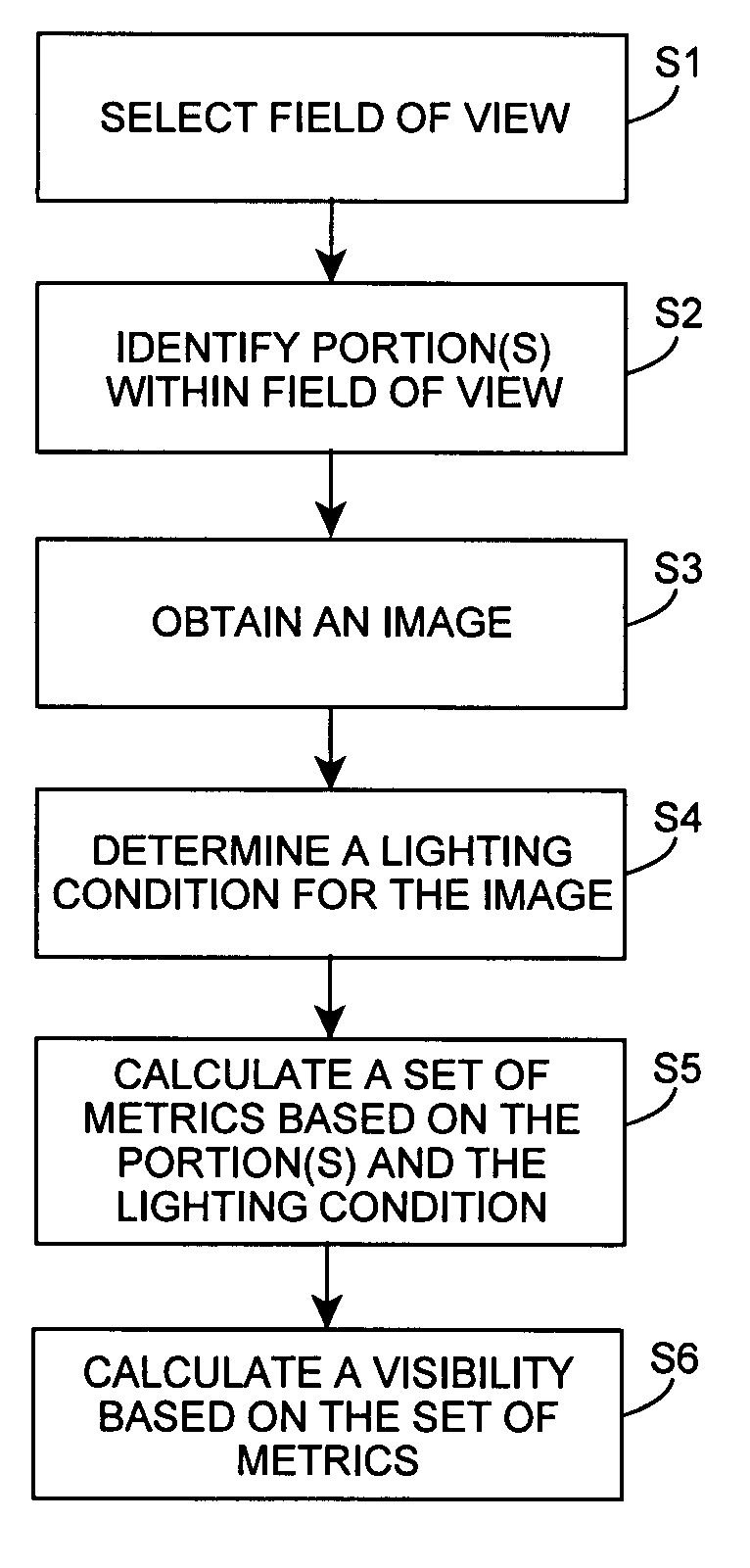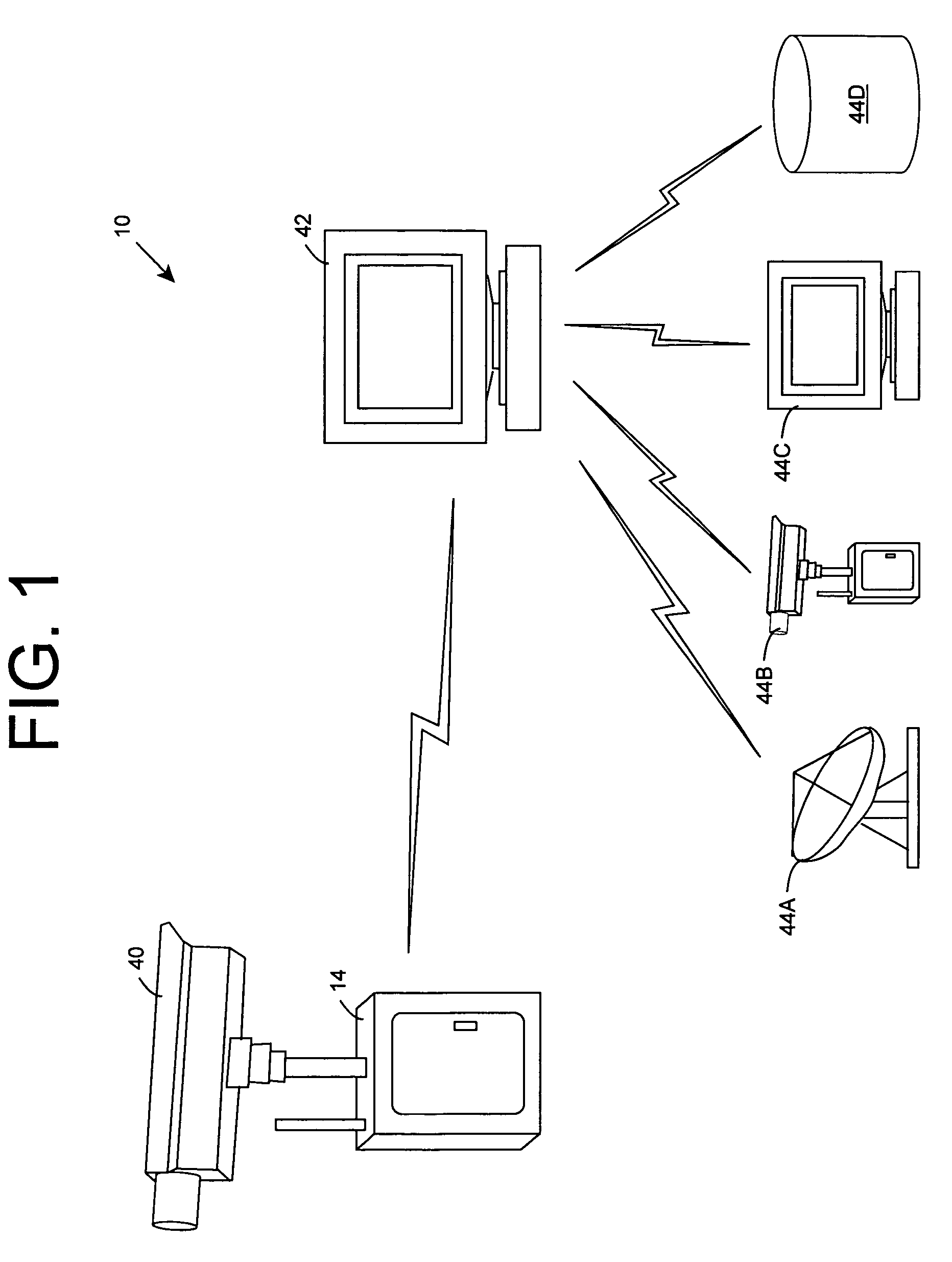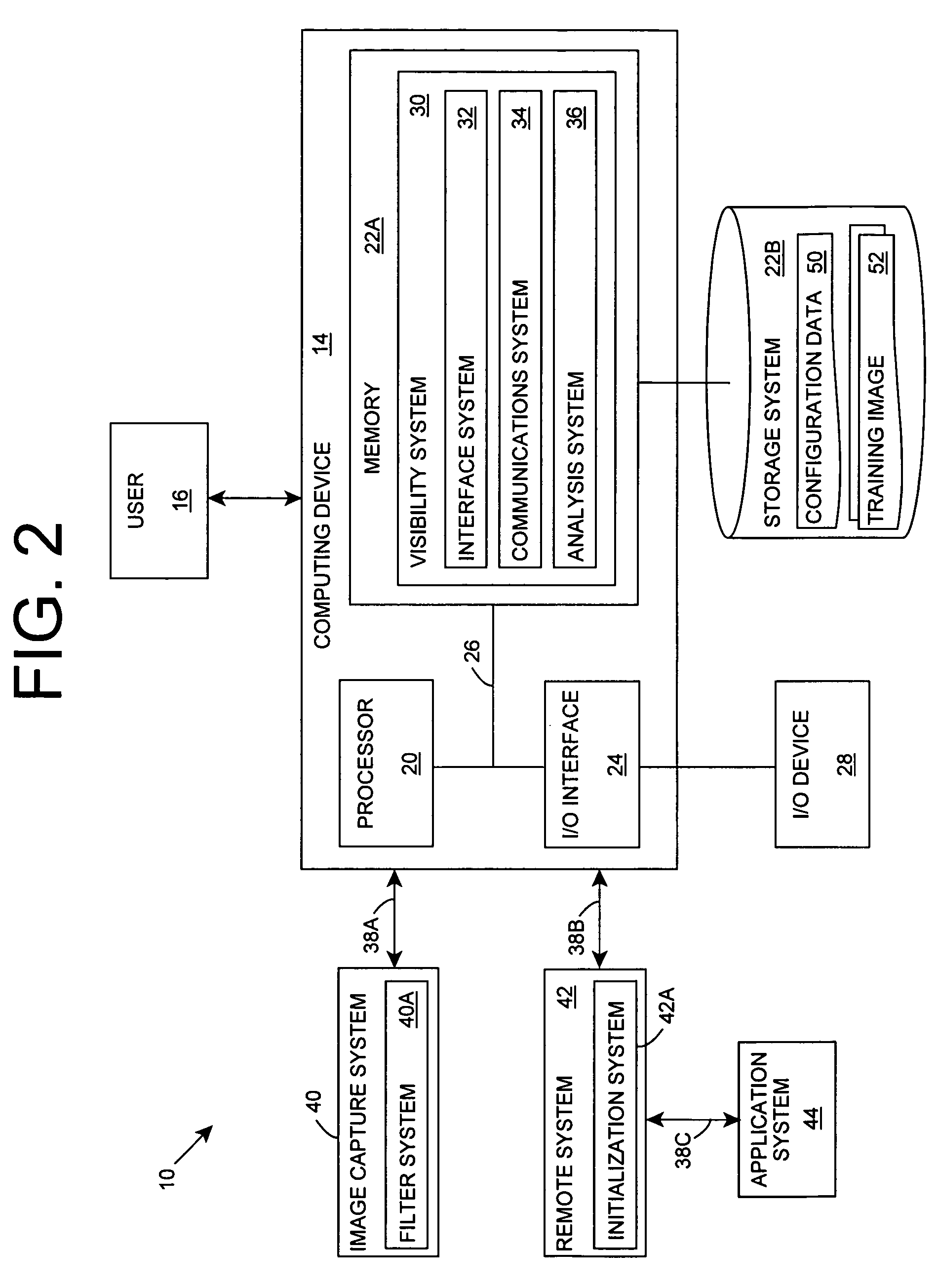Image-based visibility measurement
a technology of visibility measurement and image, applied in the field of measuring visibility, can solve the problems of reducing the light available to arrive from the target object, adding spurious light signatures, light absorption, etc., and achieve the effect of accurate measurement of visibility
- Summary
- Abstract
- Description
- Claims
- Application Information
AI Technical Summary
Benefits of technology
Problems solved by technology
Method used
Image
Examples
Embodiment Construction
[0053]As indicated above, the invention provides an image-based visibility measurement solution in which an image is used to calculate a visibility (visual range). In one embodiment, a lighting condition for the image is determined and the visibility calculation is adjusted based on the lighting condition. Further, the invention can obtain image data for a set (one or more) of portions of the image and estimate a visual range based on each portion. The estimated visual ranges can be combined to calculate the visibility for the image. Still further, multiple metrics can be calculated, each of which is used to estimate a visual range. Subsequently, the visual ranges can be used to calculate the visibility for the image. Even further, configuration data that is based on a set of training images can be used to calculate the visibility for a new image. To this extent, the invention can incorporate the lighting condition, portions of the image having differing features, multiple metrics, ...
PUM
| Property | Measurement | Unit |
|---|---|---|
| field of view | aaaaa | aaaaa |
| wavelength | aaaaa | aaaaa |
| time period | aaaaa | aaaaa |
Abstract
Description
Claims
Application Information
 Login to View More
Login to View More - R&D
- Intellectual Property
- Life Sciences
- Materials
- Tech Scout
- Unparalleled Data Quality
- Higher Quality Content
- 60% Fewer Hallucinations
Browse by: Latest US Patents, China's latest patents, Technical Efficacy Thesaurus, Application Domain, Technology Topic, Popular Technical Reports.
© 2025 PatSnap. All rights reserved.Legal|Privacy policy|Modern Slavery Act Transparency Statement|Sitemap|About US| Contact US: help@patsnap.com



